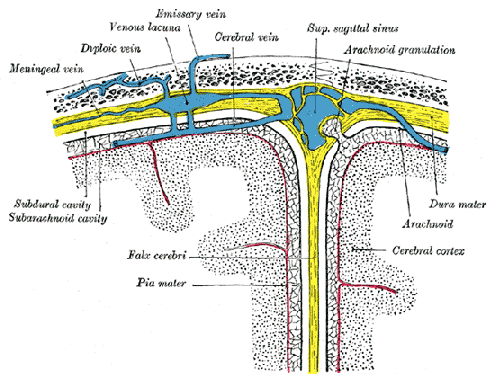
The brain and medulla spinalis are enclosed within three membranes. These are named from without inward: the dura mater, the arachnoid, and the pia mater.

The dura mater is a thick and dense inelastic membrane. The portion which encloses the brain differs in several essential particulars from that which surrounds the medulla spinalis, and therefore it is necessary to describe them separately; but at the same time it must be distinctly understood that the two form one complete membrane, and are continuous with each other at the foramen magnum.
The Cranial Dura Mater (dura mater encephali; dura of the brain) lines the interior of the skull, and serves the twofold purpose of an internal periosteum to the bones, and a membrane for the protection of the brain. It is composed of two layers, an inner or meningeal and an outer or endosteal, closely connected together, except in certain situations, where, as already described (page 654), they separate to form sinuses for the passage of venous blood. Its outer surface is rough and fibrillated, and adheres closely to the inner surfaces of the bones, the adhesions being most marked opposite the sutures and at the base of the skull its inner surface is smooth and lined by a layer of endothelium. It sends inward four processes which divide the cavity of the skull into a series of freely communicating compartments, for the lodgement and protection of the different parts of the brain; and it is prolonged to the outer surface of the skull, through the various foramina which exist at the base, and thus becomes continuous with the pericranium; its fibrous layer forms sheaths for the nerves which pass through these apertures. Around the margin of the foramen magnum it is closely adherent to the bone, and is continuous with the spinal dura mater.
The Arachnoid






























